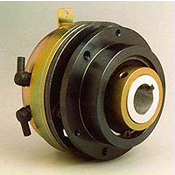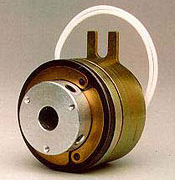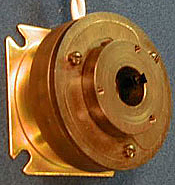Please be aware we use cookies to make your experience better. A cookie is a piece of data stored on a visitor's hard drive to help us improve your access and identify repeat visitors. Cookies can also enable us to track and target the interests of our users to enhance the experience on our site. Usage of a cookie is in no way linked to any personally identifiable non-public information. Learn more.
 | 0315-2712BSL Series Electromagnetic Clutches, 24 VDC, 80 in-lbs Rated Torque, w/ Screw Terminals $1,039.00 As low as $866.00 | View Details |
 | 0316-1712BSL Series Electromagnetic Clutches, 90 VDC, 125 in-lbs Rated Torque, w/ Screw Terminals $1,171.00 As low as $976.00 | View Details |
 | 0316-2612BSL Series Electromagnetic Clutches, 24 VDC, 125 in-lbs Rated Torque, w/ Screw Terminals $1,171.00 As low as $976.00 | View Details |
 | 0317-1012BSL Series Electromagnetic Clutches, 90 VDC, 250 in-lbs Rated Torque, w/ Screw Terminals $1,527.00 As low as $1,273.00 | View Details |
 | 0317-1812BSL Series Electromagnetic Clutches, 90 VDC, 250 in-lbs Rated Torque, w/ Screw Terminals $1,527.00 As low as $1,273.00 | View Details |
 | 0317-1814BSL Series Electromagnetic Clutches, 90 VDC, 250 in-lbs Rated Torque, w/ Conduit Box $1,592.00 As low as $1,327.00 | View Details |
 | 0317-1912BSL Series Electromagnetic Clutches, 90 VDC, 250 in-lbs Rated Torque, w/ Screw Terminals $1,527.00 As low as $1,273.00 | View Details |
 | 0317-2012BSL Series Electromagnetic Clutches, 24 VDC, 250 in-lbs Rated Torque, w/ Screw Terminals $1,527.00 As low as $1,273.00 | View Details |
 | 0317-3012BSL Series Electromagnetic Clutches, 12 VDC, 250 in-lbs Rated Torque, w/ Screw Terminals $1,527.00 As low as $1,273.00 | View Details |
 | 0509-1211FL Series Electromagnetic Clutches, 90 VDC, 2.5 in-lbs Rated Torque, w/ Lead Wires $175.00 As low as $146.00 | View Details |
 | 0509-2311FL Series Electromagnetic Clutches, 24 VDC, 2.5 in-lbs Rated Torque, w/ Lead Wires $175.00 As low as $146.00 | View Details |
 | 0510-2411FL Series Electromagnetic Clutches, 24 VDC, 6 in-lbs Rated Torque, w/ Lead Wires $227.00 As low as $190.00 | View Details |
 | 0511-2511FL Series Electromagnetic Clutches, 24 VDC, 10 in-lbs Rated Torque, w/ Lead Wires $253.00 As low as $211.00 | View Details |
 | 0513-1411FL Series Electromagnetic Clutches, 90 VDC, 25 in-lbs Rated Torque, w/ Lead Wires $347.00 As low as $290.00 | View Details |
 | 0514-2611FL Series Electromagnetic Clutches, 24 VDC, 50 in-lbs Rated Torque, w/ Lead Wires $361.00 As low as $301.00 | View Details |





